ON ARCHITECTURE- Termites on the Mall & other treats
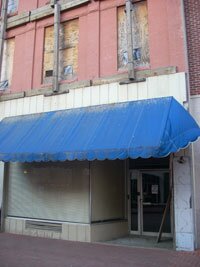
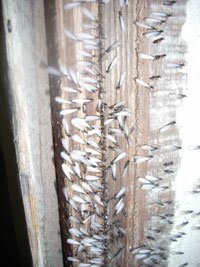
PHOTOS BY DAVE MCNAIR
On Friday, May 8, the Hook spotted a swarm of winged insects at the base of the wood facade at 111 East Main Street.
"Those are termite swarmers," said pest control expert John Ashcraft. "I'm one-hundred percent sure." Peter Warren, an Agriculture & Natural Resources agent with the Virginia Cooperative Extension, also identified them as termite swarmers.
The building, owned by developer Keith Woodard, is one of several deteriorating buildings (Derriere de Soie moved into 105 East Main and spruced up the ground floor) he owns on the corner of First and Main Streets, where he has had a long-time plan for a 9-story development.
Neighborhood development chief Jim Tolbert said he was unaware of the problem, but said he would turn the problem over to his property maintenance staff and let the building's owner know.
Woodard, too, says he was unaware of the problem, and thanked a reporter for bringing it to his attention. "We'll take care of this," he said.
Indeed, the following week Tolbert and Woodard inspected the building, but could find no termites. If fact, Tolbert's staff asked a reporter to come over and identify the spot where the termites were photographed. At that time, there were none to be seen.
"You witnessed a swarm," says Ashcraft, "and it's a very short-lived event. They are feeble flyers, and vulnerable to being eaten."
The flying swarmers, who become future termite kings and queens, fly off to find moist places to burrow and develop into new colonies.
"The swarmers are the smoke for the fire," says Ashcraft, meaning the termite colony, from which the swarmers emerge, is most likely inside the building.
Jefferson's spread
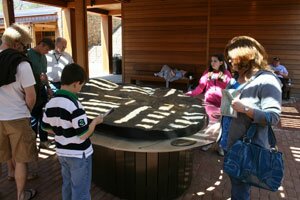
PHOTO BY DAVE MCNAIR
Tourists at the Monticello Visitors Center study a 9½-foot by 5½-foot bronze topographical relief model of Jefferson's 5000-acre plantation as it existed in the 19th century. The model, partly based on Jefferson's own surveys, shows Monticello mountain and the four working farms, plus all the structures, roads, and topography that existed in Jefferson's time.
The scale of the model measures 1 inch to every 200 feet, making the Monticello house just 2-inches wide. However, the small scale gives you a feeling for how large the Monticello plantation really was.
In addition to Jefferson's surveys, aerial photographs, old drawings, and research by Monticello archaeologists were also used to create the model, which was first created digitally.
New Martha Jefferson Hospital
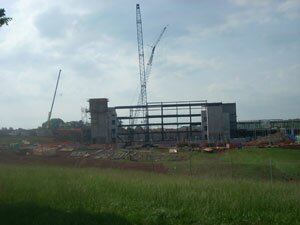
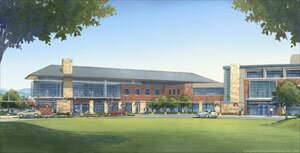
The new Martha Jefferson Hospital rises. The 500,000 square foot, $275 million Pantops Mountain facility is expected to open in 2012. At the peak of construction, there will be 500 workers on the site laying 26,176 cubic yards of structural concrete and erecting 2,408 tons of structural steel. Meanwhile, MJH has found a development partner for its old Locust Avenue location, where a $170 to $200 million mixed-use development is being planned for the 14-acre campus. You can keep track of the project via web-cam at oxblue.com/pro/open/mamortenson/marthajeffersonhospital.
Bavaro Hall
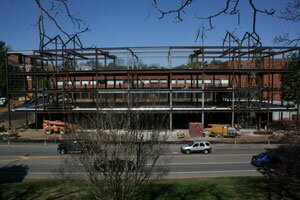
UVA's new $37 million Bavaro Hall, a long-awaited addition that will double the size of the Curry School of Education, is being built with help from a $22 million donation from Daniel Meyers, who made his fortune offering private student loans. Designed by the firm that did the Darden School, New York-based Robert A.M Stern Architects, it will include conference rooms, a garden courtyard, and multiple "open conversation areas" outside faculty offices.
A highly visible project, the new building will be located on the site of what was a parking lot on Emmet Street between the McCormick Road Bridge and the nearby pedestrian bridge. With its gables and prominent arched window, Bavaro Hall will echo architectural themes found in Boston's venerable Faneuil Hall.
Even without the retro architectural flourishes, which include a pair of columns flanking the major fenestration, Bavaro Hall will change the face of Emmet Street by blocking the view of the Curry's schools current headquarters, the early 1970s Ruffner Hall.
#